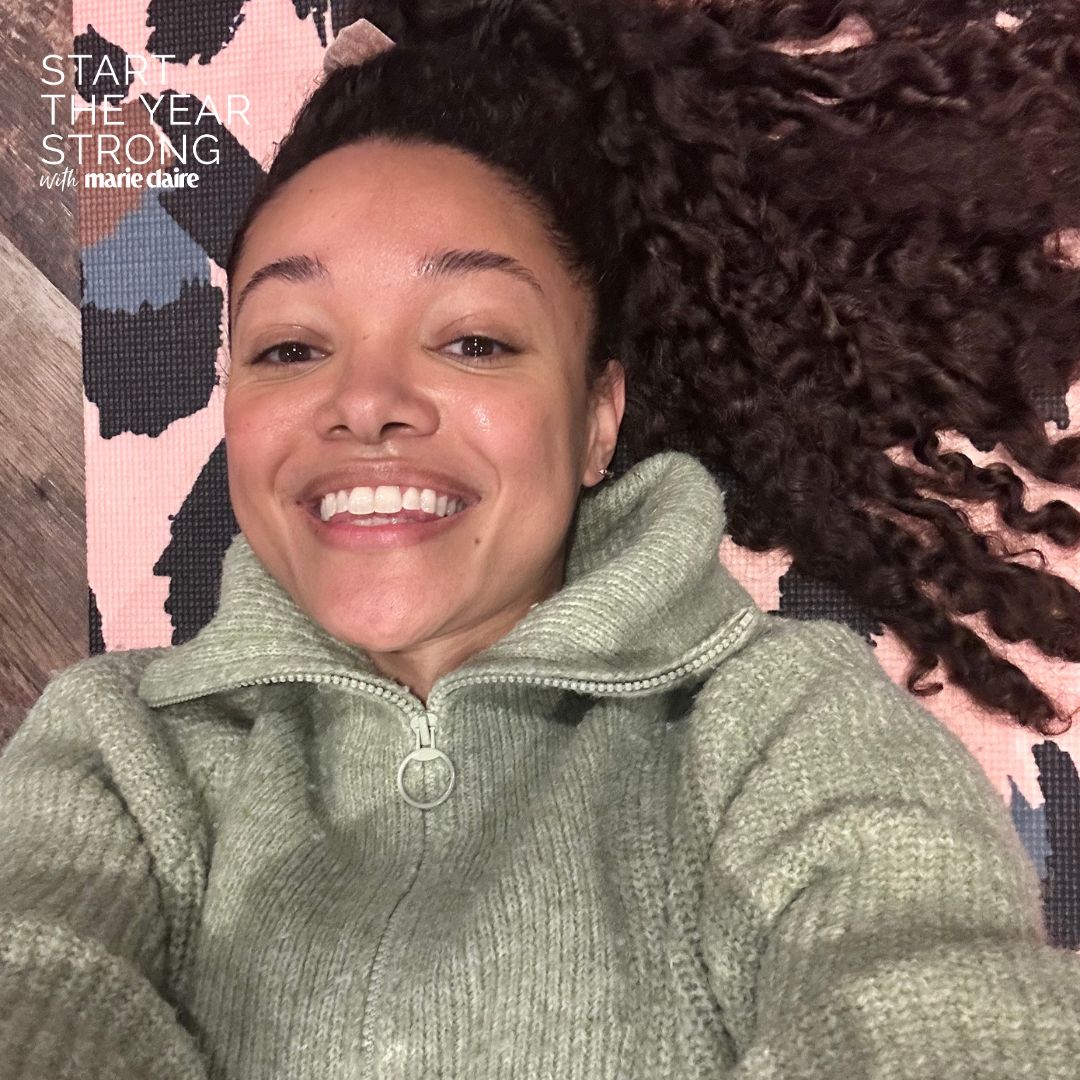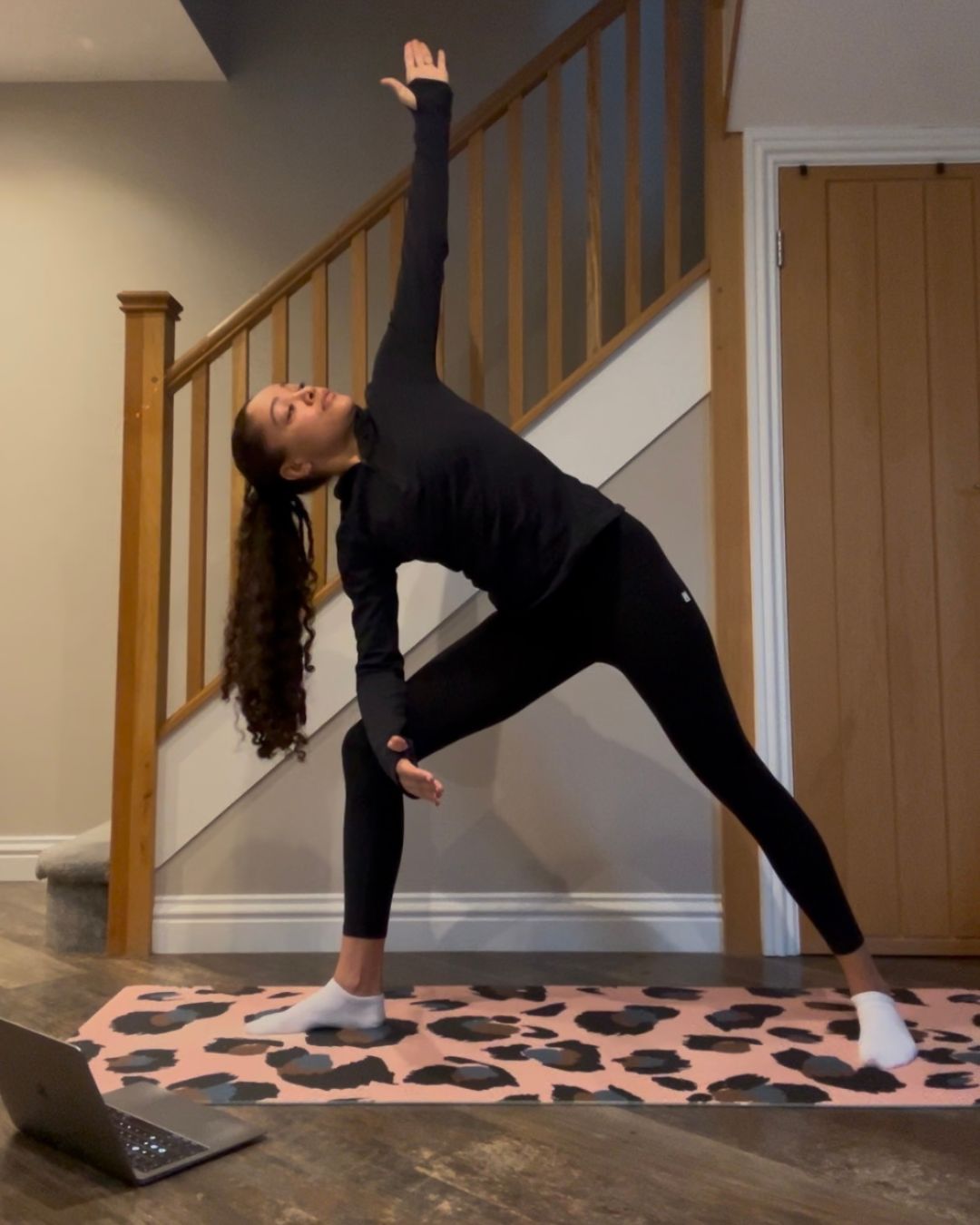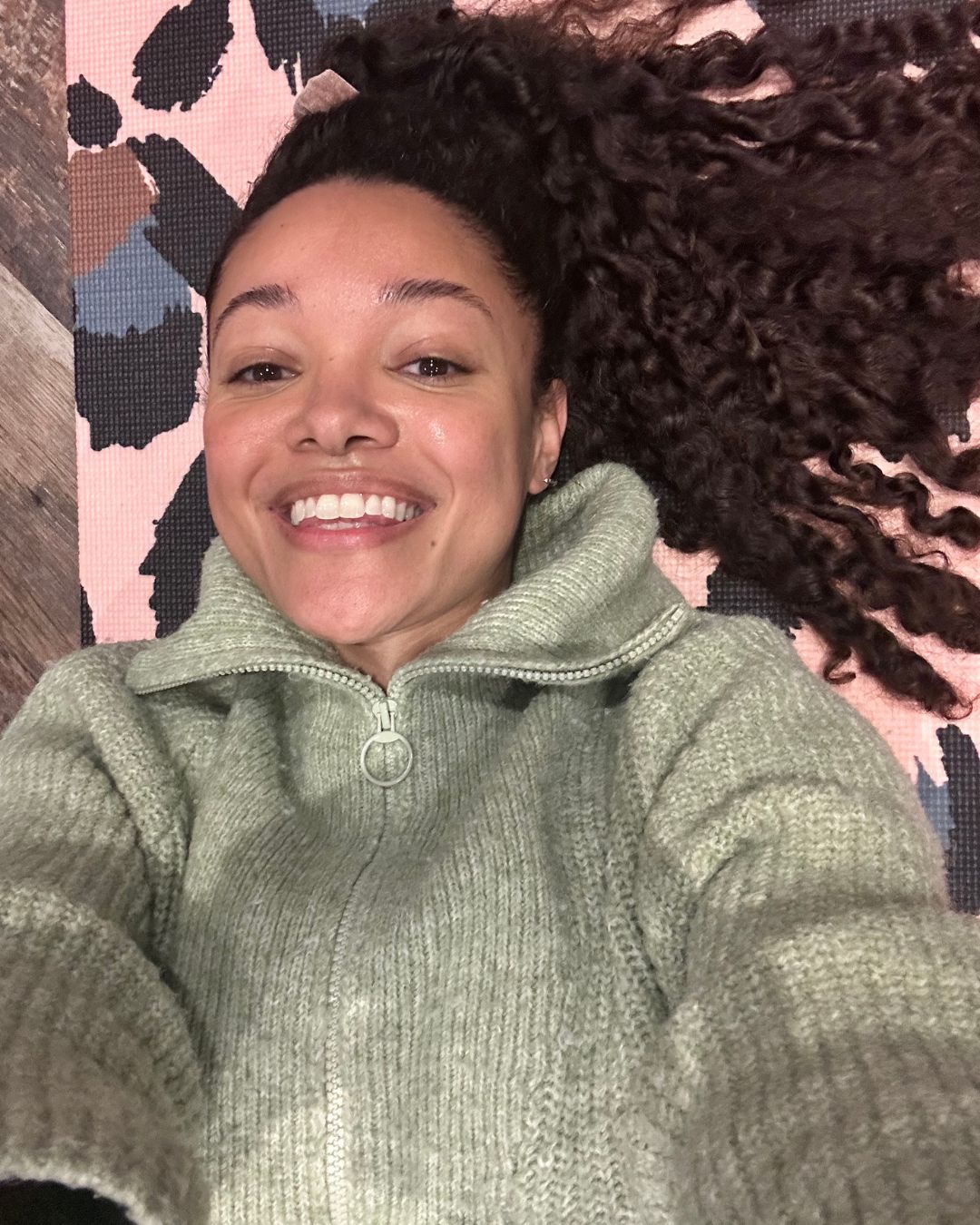
Balance—that’s my word for 2025 after the tail-end of the previous year resulted in me getting struck down by the dreaded flu that was doing the rounds. To help me ease back into exercise, I knew I wanted a low-impact mind-body practice that would make me feel good from the inside out. The solution? Yoga with Adriene’s 7-day prana challenge.
For years, the rhetoric has been that if an exercise class didn’t leave you dripping in sweat or panting for breath, then it’s just not worth doing. But as science has shown and experts have confirmed, there are loads of benefits of yoga, thanks to its low-impact nature.
For example, research published in the International Journal of Yoga says that yogic practices can boost muscular strength, improve body flexibility and reduce stress and anxiety. The study even goes so far as to say that the powerful practice of yoga can “enhance overall well-being”. And better yet, because you just need a mat and some floor space to get stuck in, you won’t even have to brave the UK's chilly minus temps.
After spending the past year or so dedicating more time to my Pilates hundred than my downward dog, yoga is a practice I’m hoping to do more of this year. So what better place to start than with one of the internet’s fave yogis, right?
To find out how I got on with my Yoga with Adrienne’s 7-day prana challenge keep scrolling. I also spoke to experts to find out what is 'prana' and how to cultivate it. If you're new to yoga, discover yoga for beginners and the best type of yoga to do for relaxation. While you’re here, you might also like to read up on the difference between Pilates vs yoga, and don't miss our guide to the best yoga mats, too.
Yoga with Adriene's 7-day prana challenge just dropped — so I tried it
Who is Yoga with Adriene?
If you were to ask anyone out there about their favourite yogi, I’m pretty sure Adriene Mishler—the brains behind Yoga with Adriene—would come up repeatedly.
Since launching her platform in 2012, Mishler has racked up more than 13 million subscribers on YouTube, and just over 1 million followers on Instagram. Today, the Texas-based yogi is known (and loved) for her calming, inclusive and easy-to-follow on-demand yoga classes, along with her iconic 30-day yoga challenges.
“Yoga can seem intimidating for newcomers, and Adriene does an incredible job of making the practice accessible and inclusive for all, which is such an important skill to have as a teacher,” yoga teacher Anouska Shenn, founder of The Office Yoga Company says. “She talks to you through the camera like you’re a good friend, and makes you feel like she’s walking the journey with you. She’s great at putting people at ease.”
What is the Yoga with Adriene 7-day challenge?
The challenge is pretty much what it says on the tin: a 7-day Hatha yoga series which is a brilliant form of yoga for beginners.
“Seven-day challenges can be great for developing motivation and deepening knowledge about the practice,” qualified yoga instructor Eloise Skinner explains. “Other people might prefer lengthier challenges, or simply the challenge of a regular practice,” the expert adds.
However, what makes Mishler's different and fresh is that this challenge places a special focus on "prana" and the "energetic body".
What is prana?
Before starting my 7-day yoga challenge, '"prana" was a word I hadn’t come across. Keen to find out more, I turned to yoga instructor Aysha Bell who told me that prana is a Sanskrit word that translates to "life force" or "vital energy”.
Prana is nothing new. According to the history books, prana was mentioned in the Sanskrit text, Chandogya Upanishad, which is believed to have been composed before 1000 BCE.
Explaining how it works, Bell says: “In yoga philosophy, prana is believed to flow through the body via energy channels known as ‘nadis’, and it is concentrated in energy centers called ‘chakras’. The balance and flow of prana is essential for physical, mental, and spiritual well-being,” the expert adds.
So how exactly can it be cultivated? “Prana can be cultivated and enhanced through various means, including breathing exercises, meditation, asanas (physical postures), diet, and exposure to nature,” Bell explains.
In Yoga with Adriene’s 7-day prana challenge, prana is enhanced through asanas, breathwork and meditation, as Mishler explains in her introductory video below.
How does the 7-day challenge work?
As its name suggests, this 7-day challenge is just that. For seven days from the beginning of January, Mishler will be dropping a new and fresh 17-to-26-minute yoga workout onto her channel.
The idea is that you tick off each of the seven yoga workouts as they come.
My 7-day Yoga with Adriene prana challenge
Days one to three
It’s the first Monday of January 2025 and instead of heading back to work, my current self is already thanking past 'me' for taking one more day to just ease into the New Year.
I roll out my yoga mat, load up Adriene’s Prana - Day 1. and as the yogi's friendly and softly spoken voice reaches my ears, I already know this is just what my mind, body and spirit need. I say this because the first five minutes involve sitting down in a cross-legged position to just 'be'—something I never do. Throughout the workout, Mishler encourages you to move at a slow and super soft pace, listening to your body while completing satisfying poses, like child’s pose and downward dog while pedalling your feet. So, in other words, these are all moves that just feel good. The fact that the workout ends with a two-minute savasana (also known as Corpse Pose, or what Mishler likes to call a ‘Flash of Surrender’)—where you lie down on your back with your arms by your side and your palms facing up—is just the kind of meditative movement my 2025 has been waiting for.
Day two starts off with another cross-legged seated pose, along with a lot of twists in the thoracic spine (an area that gets a bit sticky for me), side stretches and a static hold with a plank. While day three begins the same, although there are a lot of three-legged dogs and hip-opening low lunges.
I think the hardest part of my yoga journey is matching my breath with the movement. But it's almost as though Mischler knows this so she keeps reminding you to do so.

Days four to seven
In my opinion, day four is when things start to gain momentum as this workout begins standing and includes multiple flows, where you’ll move through a series of poses in time with your breath. That said, each move is still completed nice and slowly and in a very controlled manner. And despite the slower-than-usual pace, each yoga session is over before I know it. It's like time stands still while I'm in this little yoga bubble, while the clock in the outside world is racing by. While says six and seven take some inspo from Pilates with leg lifts, boat pose and crunch twists all thrown in—and my core certainly knew about it.
By the end of my 7-day challenge, it feels satisfying knowing that I've moved my body with intention. My hips certainly feel a lot looser (thanks low lunges) and I feel as though I've got some much-needed headspace by releasing any NY tension I was holding.
As countless research has shown, yoga is known (and loved) for its brilliant ability to reduce stress. It’s why I often turn to it and the top reason why I decided to dedicate at least five minutes of my time to complete yoga before bed during the busy festive season.
But with the extra focus on breathwork, what I notice is that Yoga with Adriene's 7-day prana challenge left me in a restful, relaxed and balanced state both on and off the mat.
Explaining why this might be, Shenn says: “When we practice working with our prana through the breath it puts us in ‘being’ mode and helps to quiet the judgy, ruminative part of the brain. When we experience difficult emotions, there is a tendency to hold or restrict the breath, and we do this to feel the emotion less intensely. These suppressed feelings can end up being stored in the body as tension. In yoga, we’re encouraged not only to focus on the breath, but to breathe fully and deeply, which helps us to feel, process, and release stagnant emotions."

Shop MC UK's yoga workout essentials here:
One of the best things about yoga is the fact you can do it anywhere. All you need is a comfortable yoga mat to help cushion your joints and this comfortable padded option is just the thing.
Offering up support, preventing injury and helping you increase your strength and flexibility, yoga blocks are worth their weight in gold.
Now that 2025 is here, it’s out with the old and in with the new. This wellness diary comes with daily intentions, an energy score and place to journal.
What is the hardest type of yoga to learn and why?
There are many types of yoga and everybody might find one style harder than the other, depending on your current health and fitness levels. For example, Hatha yoga is made up of seated and standing poses as well as bends, twists, balances, and inversions, Yin yoga is a calmer, more soothing, meditation-focused flow, while Ashtanga yogi a more rigorous workout and is bound to challenge your stamina, flexibility, and strength.
“It’s true, there are some forms of yoga that are more athletic (even acrobatic!) than others, but for many of us, the most challenging thing to learn will be taming the thinking parts of our brains and getting to a place of just being with your body and your breath,” yoga teacher Anouska Shenn, founder of The Office Yoga Company explains.
“A lot of people discover yoga because they want to get more flexible, but that’s not what makes them stay. It’s that profound connection to, and moment-to-moment experience of, their body that keeps them coming back.”







